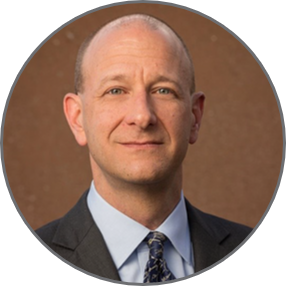8 Must-Know CV Tips for Radiologists—Whether Job Hunting or Not
If your Curriculum Vitae isn’t all it could be, you may as well be stacking trophies in a cave. I say this as a longtime radiologist recruiter who...

Remote radiologist jobs with flexible schedules, equitable pay, and the most advanced reading platform. Discover teleradiology at vRad.

Radiologist well-being matters. Explore how vRad takes action to prevent burnout with expert-led, confidential support through our partnership with VITAL WorkLife. Helping radiologists thrive.

Visit the vRad Blog for radiologist experiences at vRad, career resources, and more.

vRad provides radiology residents and fellows free radiology education resources for ABR boards, noon lectures, and CME.

Teleradiology services leader since 2001. See how vRad AI is helping deliver faster, higher-quality care for 50,000+ critical patients each year.

Subspecialist care for the women in your community. 48-hour screenings. 1-hour diagnostics. Comprehensive compliance and inspection support.

vRad’s stroke protocol auto-assigns stroke cases to the top of all available radiologists’ worklists, with requirements to be read next.

vRad’s unique teleradiology workflow for trauma studies delivers consistently fast turnaround times—even during periods of high volume.

vRad’s Operations Center is the central hub that ensures imaging studies and communications are handled efficiently and swiftly.

vRad is delivering faster radiology turnaround times for 40,000+ critical patients annually, using four unique strategies, including AI.
.jpg?width=1024&height=576&name=vRad-High-Quality-Patient-Care-1024x576%20(1).jpg)
vRad is developing and using AI to improve radiology quality assurance and reduce medical malpractice risk.

Now you can power your practice with the same fully integrated technology and support ecosystem we use. The vRad Platform.

Since developing and launching our first model in 2015, vRad has been at the forefront of AI in radiology.

Since 2010, vRad Radiology Education has provided high-quality radiology CME. Open to all radiologists, these 15-minute online modules are a convenient way to stay up to date on practical radiology topics.

Join vRad’s annual spring CME conference featuring top speakers and practical radiology topics.

vRad provides radiology residents and fellows free radiology education resources for ABR boards, noon lectures, and CME.

Academically oriented radiologists love practicing at vRad too. Check out the research published by vRad radiologists and team members.

Learn how vRad revolutionized radiology and has been at the forefront of innovation since 2001.

%20(2).jpg?width=1008&height=755&name=Copy%20of%20Mega%20Nav%20Images%202025%20(1008%20x%20755%20px)%20(2).jpg)

Visit the vRad blog for radiologist experiences at vRad, career resources, and more.


Explore our practice’s reading platform, breast imaging program, AI, and more. Plus, hear from vRad radiologists about what it’s like to practice at vRad.

Ready to be part of something meaningful? Explore team member careers at vRad.
3 min read
 Benjamin W. Strong, MD
:
March 11, 2021
Benjamin W. Strong, MD
:
March 11, 2021
.png)
The 2021 radiologist job market finds radiologists at the mercy of those who would hire them. The imbalance has a lot to do with a certain public health crisis, so it may prove temporary. Regardless, radiologists seeking a new challenge would be shrewd to slow down their job search at least long enough to survey the situation.
Got five minutes? I’ve got some thoughts to share.
Let’s start with what was happening when it became clear COVID-19 had changed everything.
In the last three quarters of 2020, the number of “free agents” applying for work at the largest radiology practice in the U.S. noticeably ticked up. One after the other approached the practice—yes, I’m talking about vRad—after having a job offer rescinded elsewhere.
This wave came on top of the much larger surge of job-seeking radiologists caused by the closing of imaging centers en masse. This was seen everywhere, not just here.
.png)
Here’s the thing. After a certain point, the expanded candidate pool couldn’t be explained by plummeting exam volumes. After all, in normal times, falling volumes soon enough recover. Everyone knows this and waits out the lull. So what’s going on?
If you follow the world of investing even perfunctorily, you know that markets hate uncertainty. And the cycle of routine medical procedures getting postponed, rescheduled and postponed again has created an ebbing and flowing vortex of uncertainty.
The effect on job markets is evident throughout medicine. Absolutely no one knows when things will return to normal, if ever. If they say they know, they’re either deceiving themselves or fibbing. (True confession: At vRad, where we pride ourselves on data-driven forecasts of volume and capacity, we struggled to make projections for the start of 2021.)
These are tricky times for radiologists looking to market their skillsets to the most desirable bidder. If that’s you, I have two quick pointers to help you simplify your approach.
Staying within the same model—like running away just to escape dissatisfaction—would make it highly likely that, when the new-job honeymoon phase ends, you’ll find you jumped out of a frying pan and into a fire. The names and faces will have changed. The specific causes of your discontent, probably not so much.
I regularly see this happen in all practice models. And it’s a problem for employers as well as radiologists. I’m especially empathetic with small to midsize private practices that can only give their radiologists so much leeway on work preferences, compensation structures and other HR issues. These practices’ pain over staffing during COVID is easy to see: Most of the radiologists who’ve applied at vRad due to rescinded job offers are from private practices.
In a certain sense, the sclerotic COVID job market may be doing some radiologists a favor. I’m thinking here of the private-practice refugees who’ve looked into fulltime remote reading. A practice whose business is 90% emergency reads, for one, may not initially have been on their radar. But I’ve certainly seen teleradiology reward the open-minded with plenty of job security.
A final thought on the present radiologist job market. Our entire specialty was getting put to the test before the pandemic descended. From practice consolidation to radiologist burnout to the war on radiological reimbursement, a lot has been hitting us at once.
And a lot of it is here to stay in every practice model and nearly every market. So take care to shop this market now only if you’re 99% certain you won’t look back and start feeling job-changer’s remorse a year or two out.
One way you can increase your odds of avoiding that bad but avoidable scenario: Seriously consider fulltime remote reading.
I’ll bet it didn’t escape your notice that 2020 was the year tele-everything won over the world. You weren’t imagining it. A recent survey of 1,600 clinicians co-led by the American Medical Association found more than 80% believe telehealth has improved the timeliness of care for their patients. The AMA drew from this finding and others when it announced in January that it plans to press lawmakers and regulators on codifying rules governing coverage of, access to and reimbursement for telehealth.
Given all of the above, I don’t think it’s a stretch to say we may be entering a golden age for fulltime remote reading. If so, the radiologist job market may not be so much roiling with uncertainty as it is adjusting to a new reality.
Either way, there’s plenty about work to contemplate. I hope these thoughts offer some clarity as you plan your post-pandemic future in radiology.

If your Curriculum Vitae isn’t all it could be, you may as well be stacking trophies in a cave. I say this as a longtime radiologist recruiter who...
.png)
Part-time, locum tenens, moonlighting—in its many forms, practicing radiology on the side is a time-honored tradition. It offers an alternate pathway...
-3.png)
How well does your workstation and platform meet your needs to work efficiently, effectively, and without frustration? In my five years working...
vRad (Virtual Radiologic) is a national radiology practice combining clinical excellence with cutting-edge technology development. Each year, we bring exceptional radiology care to millions of patients and empower healthcare providers with technology-driven solutions.
Non-Clinical Inquiries (Total Free):
800.737.0610
Outside U.S.:
011.1.952.595.1111
3600 Minnesota Drive, Suite 800
Edina, MN 55435